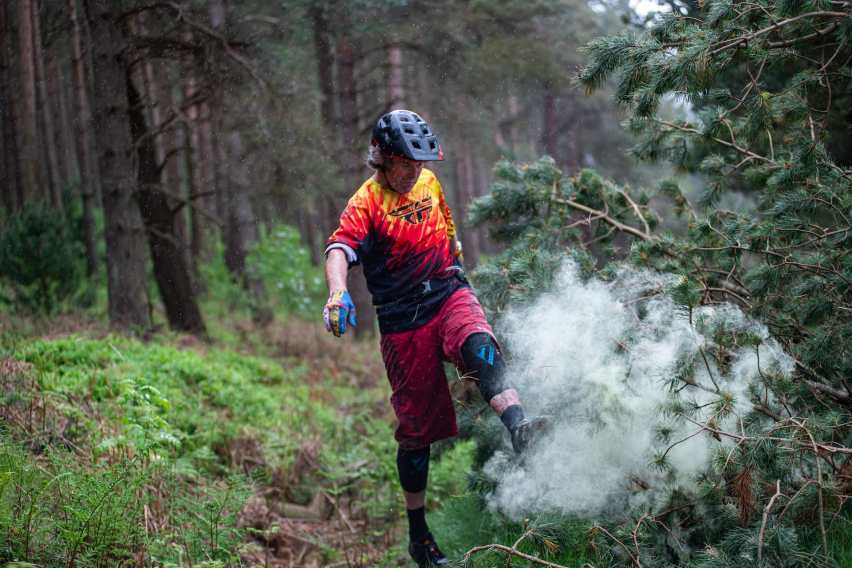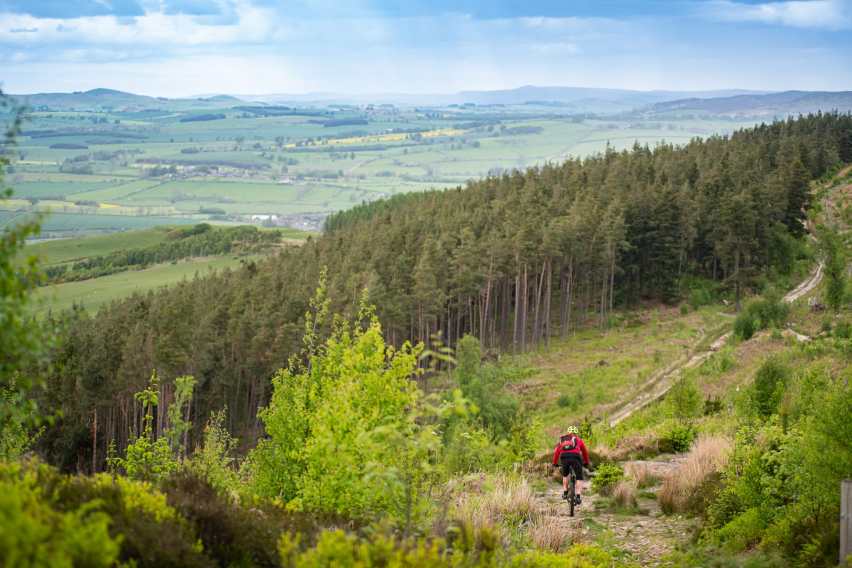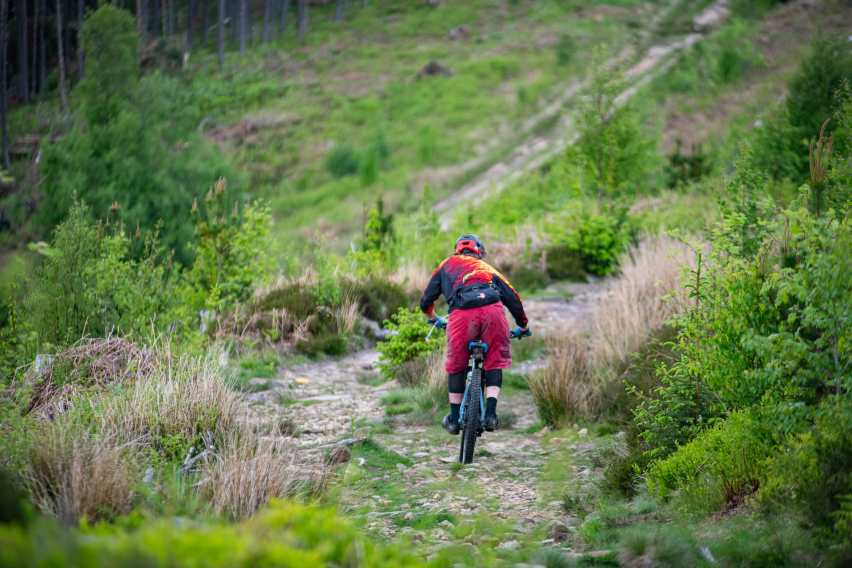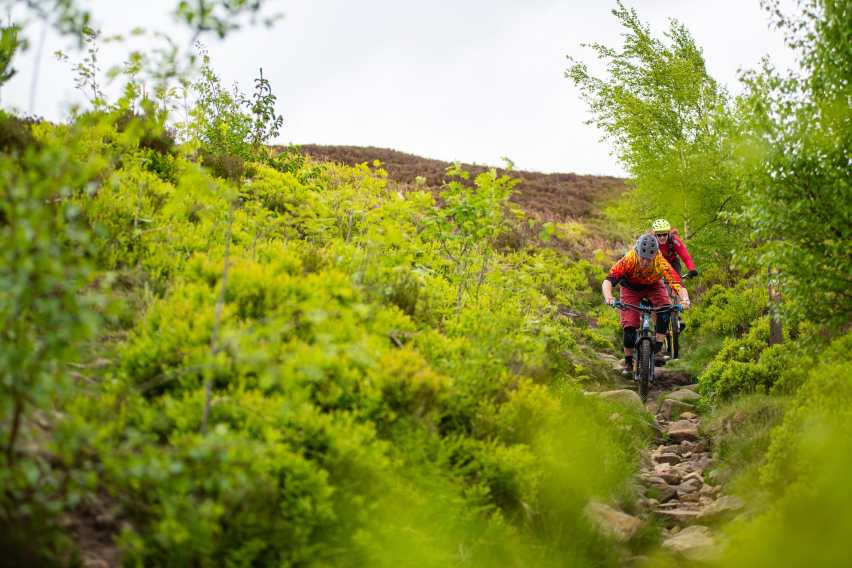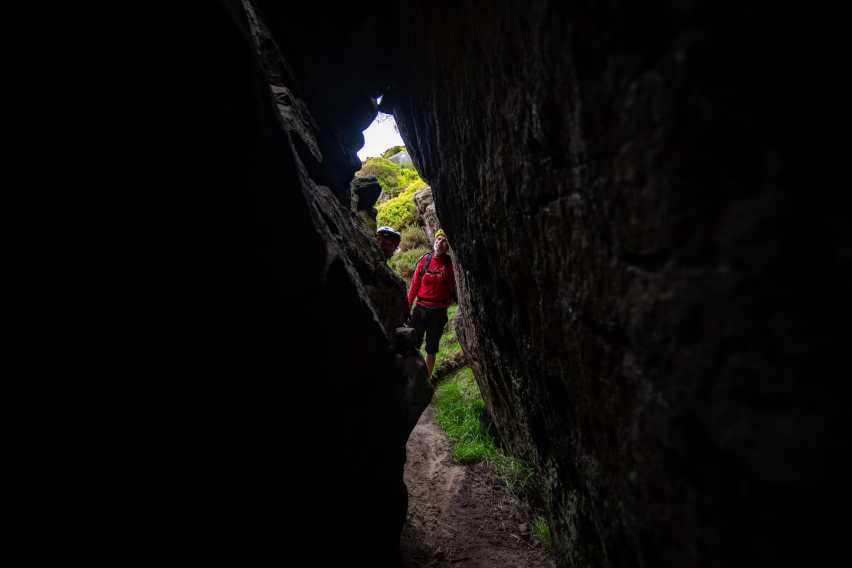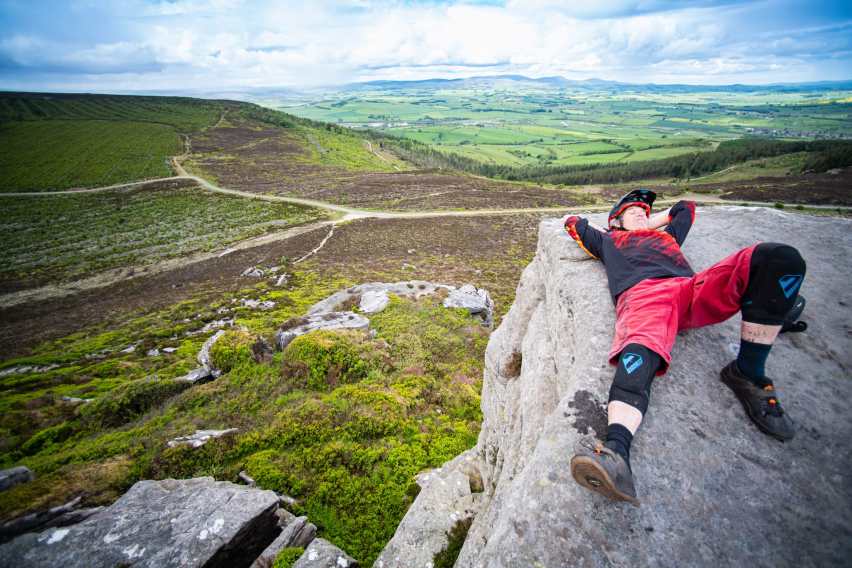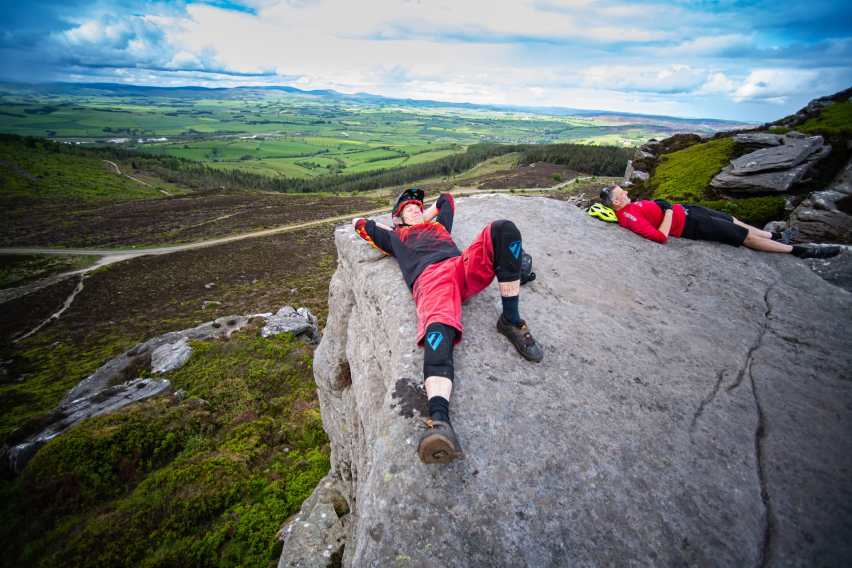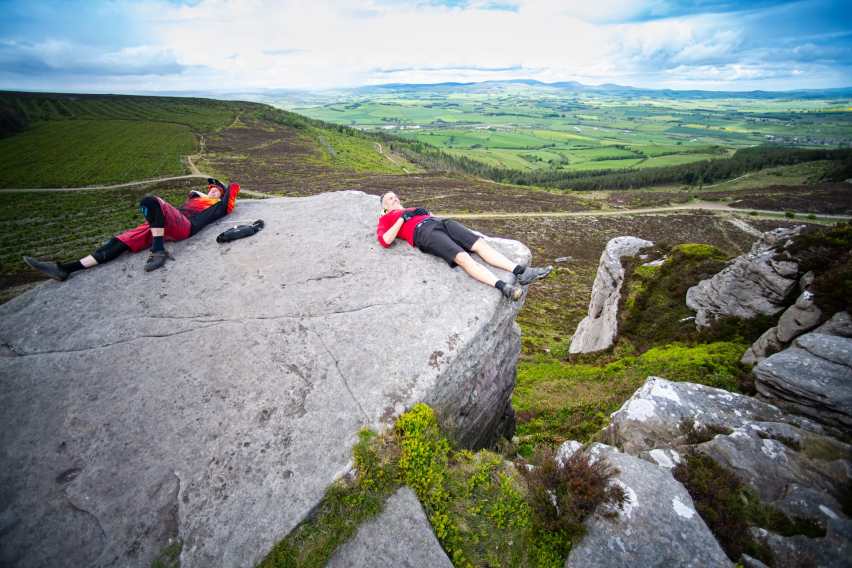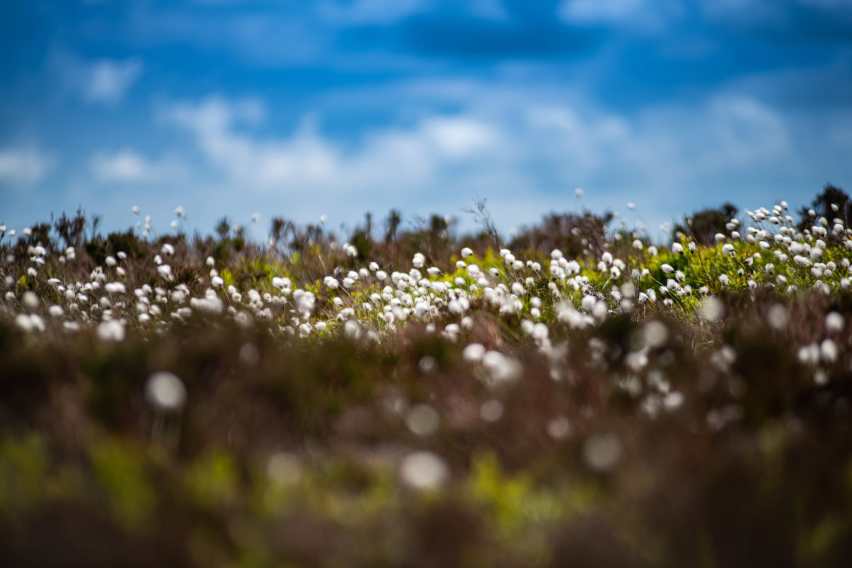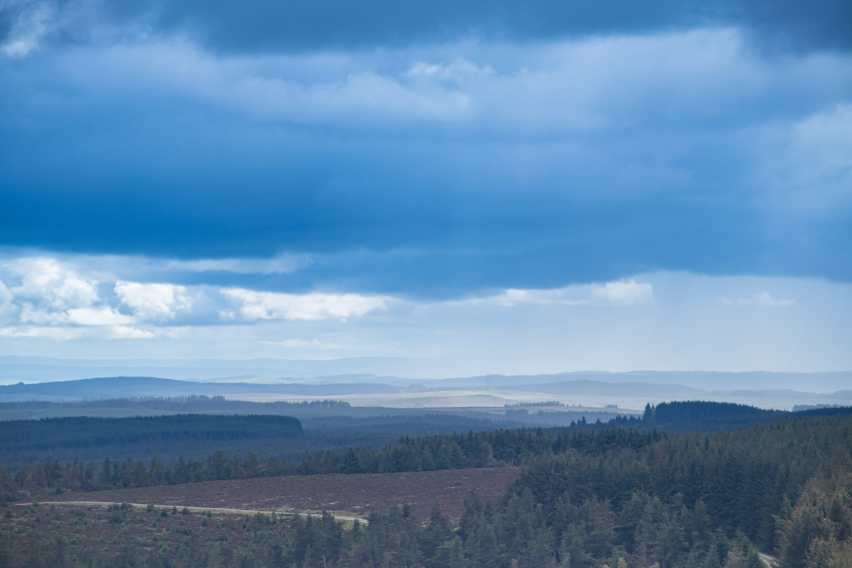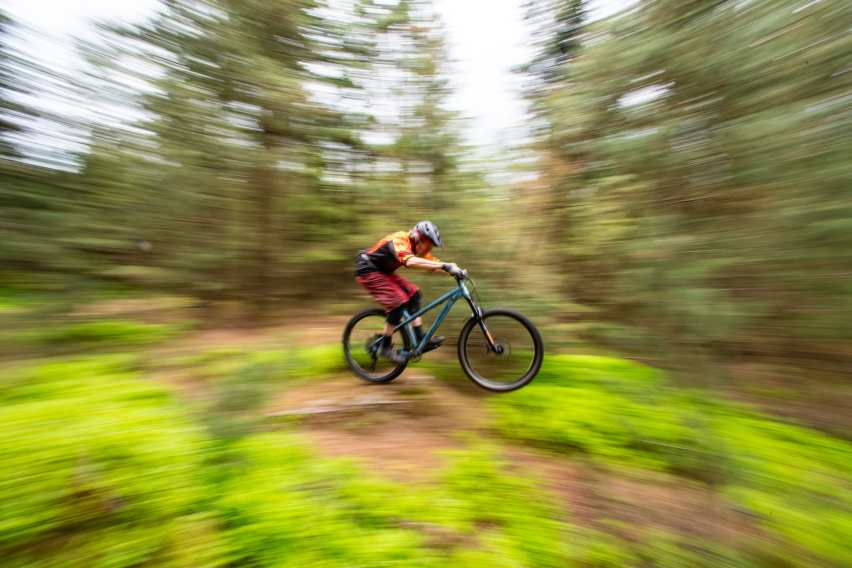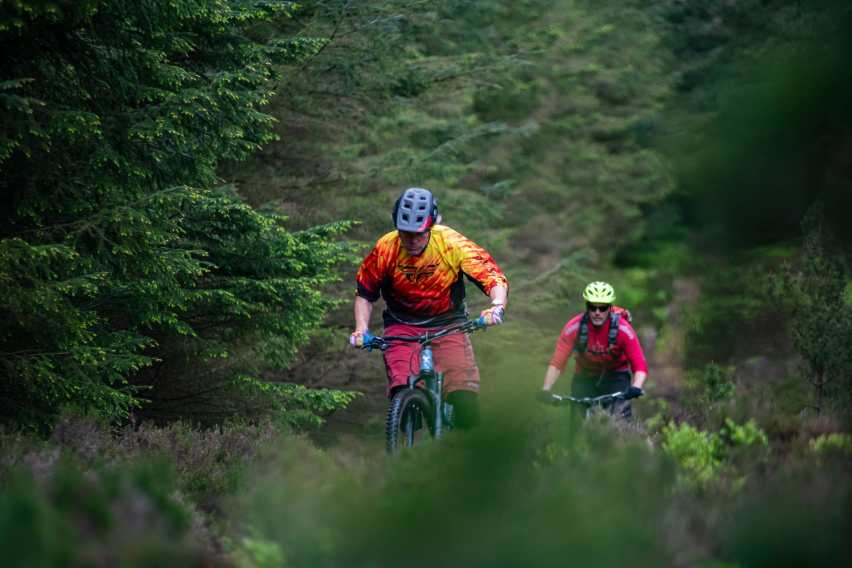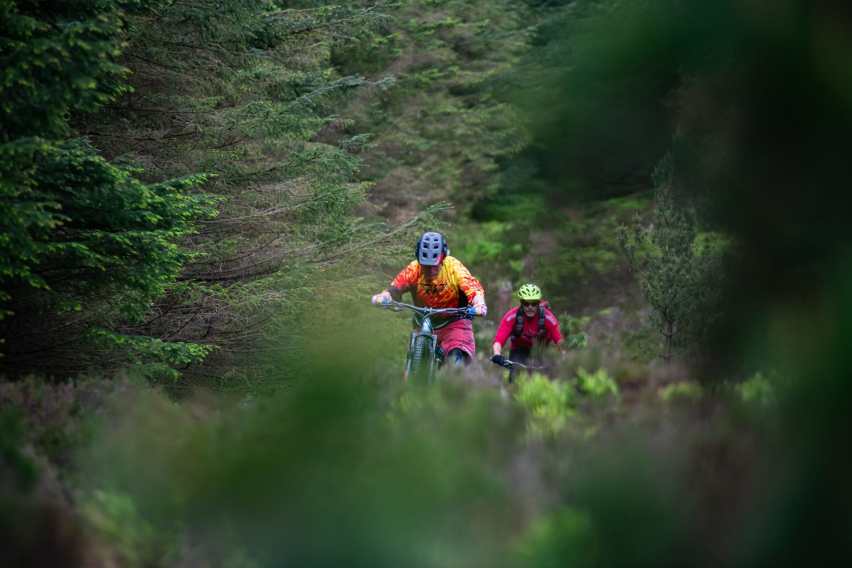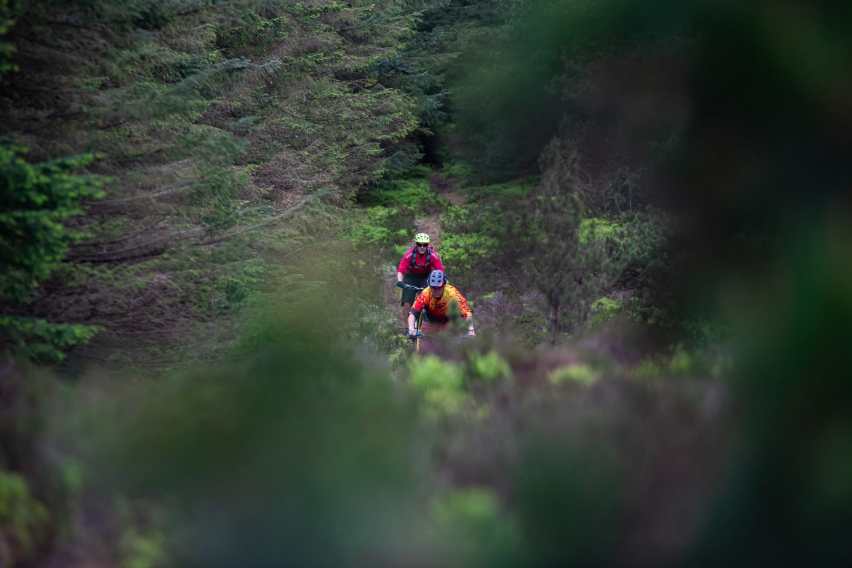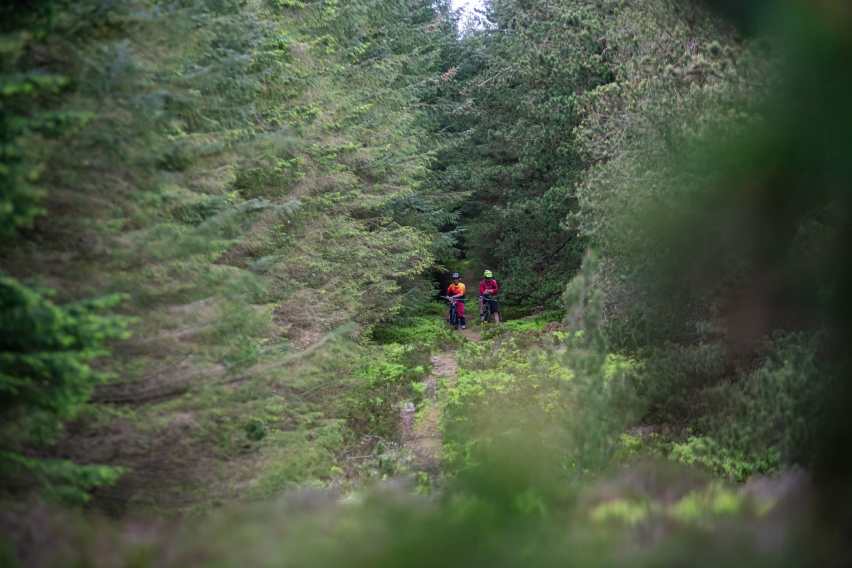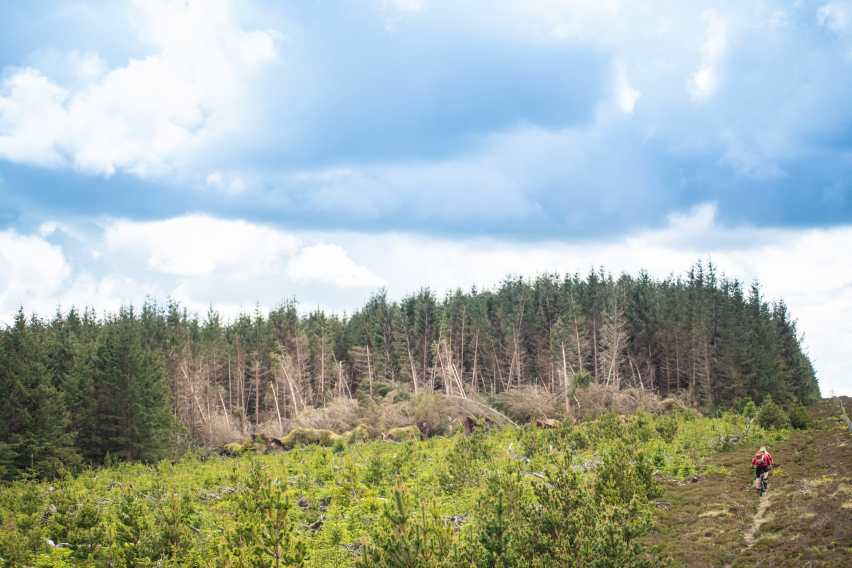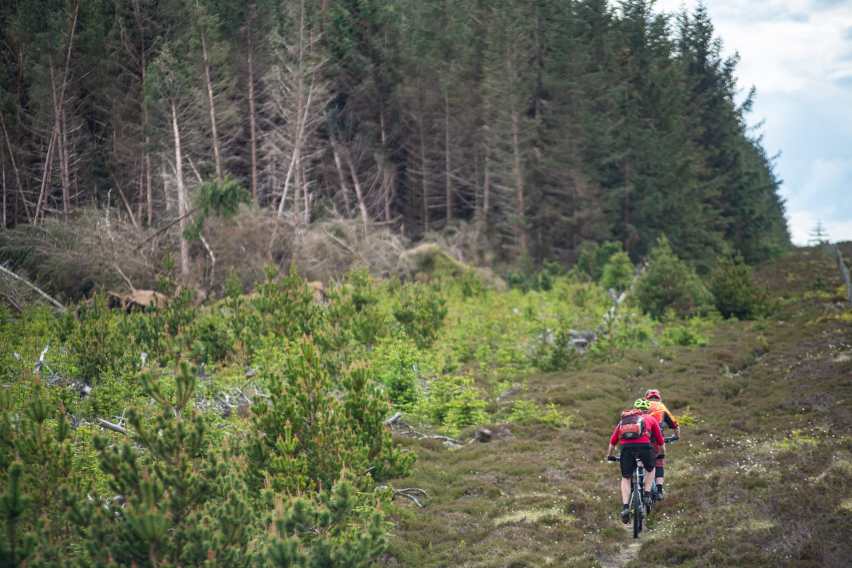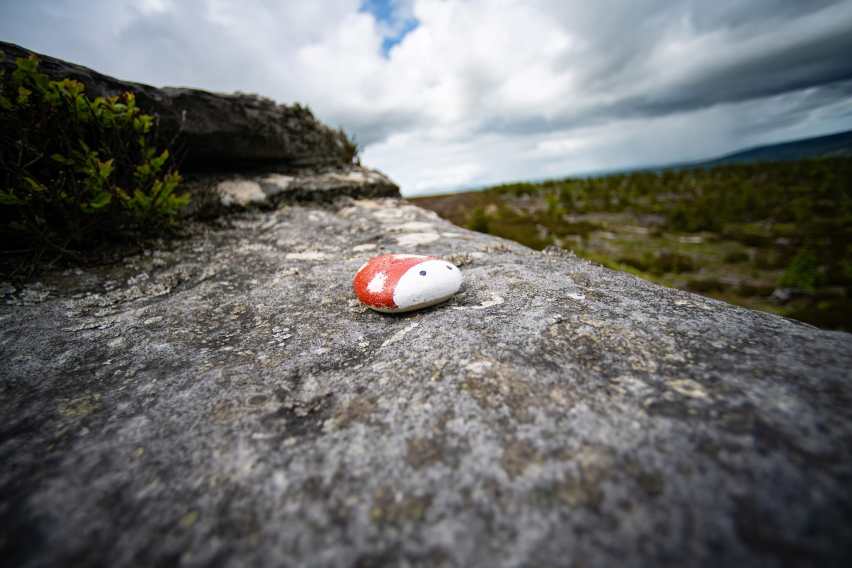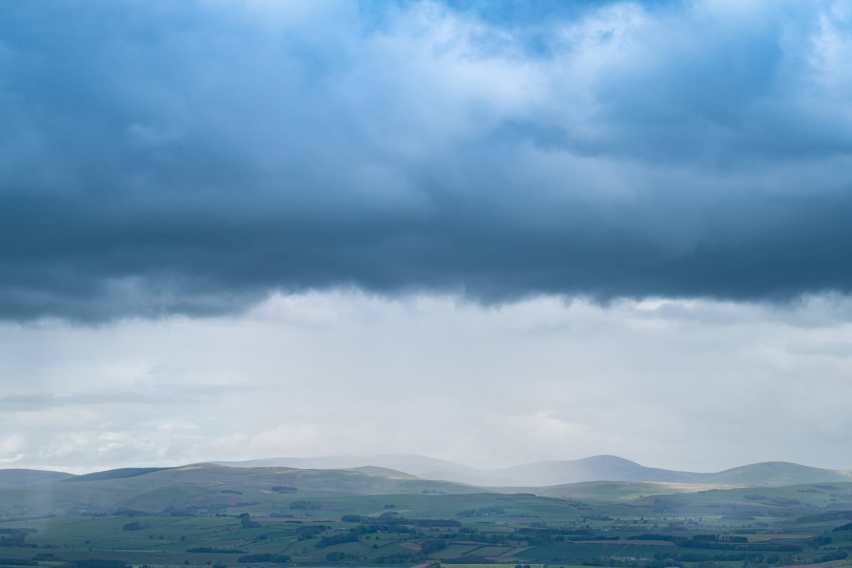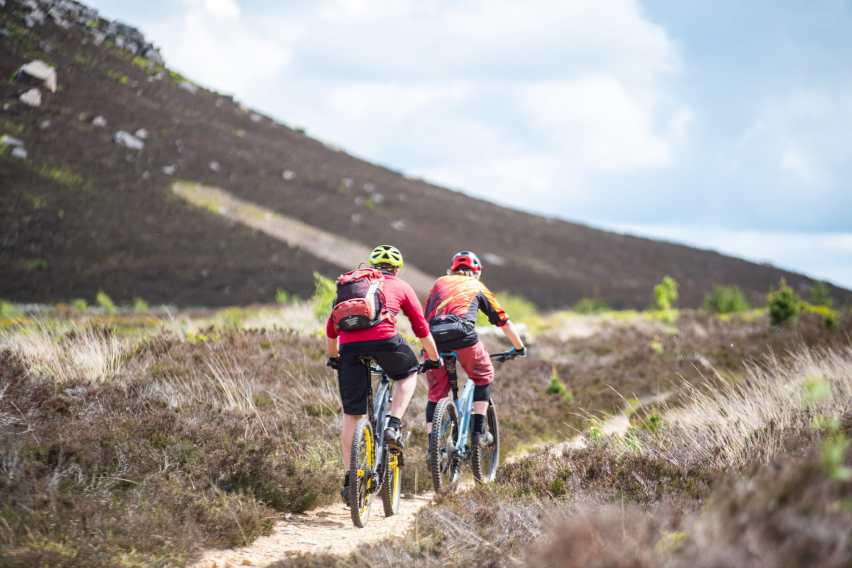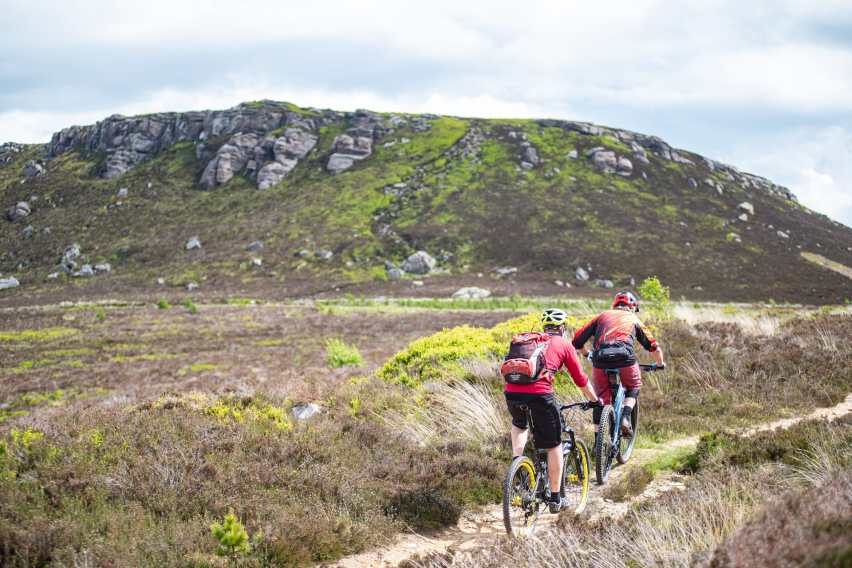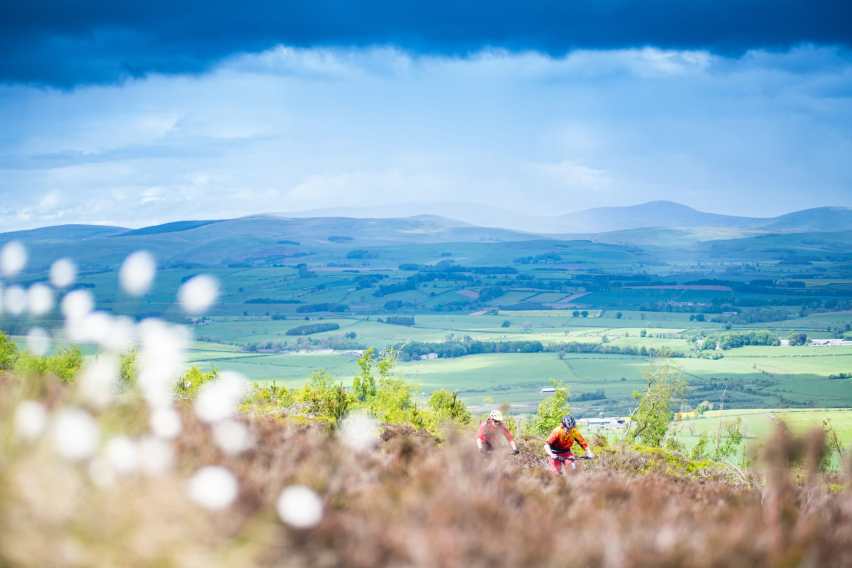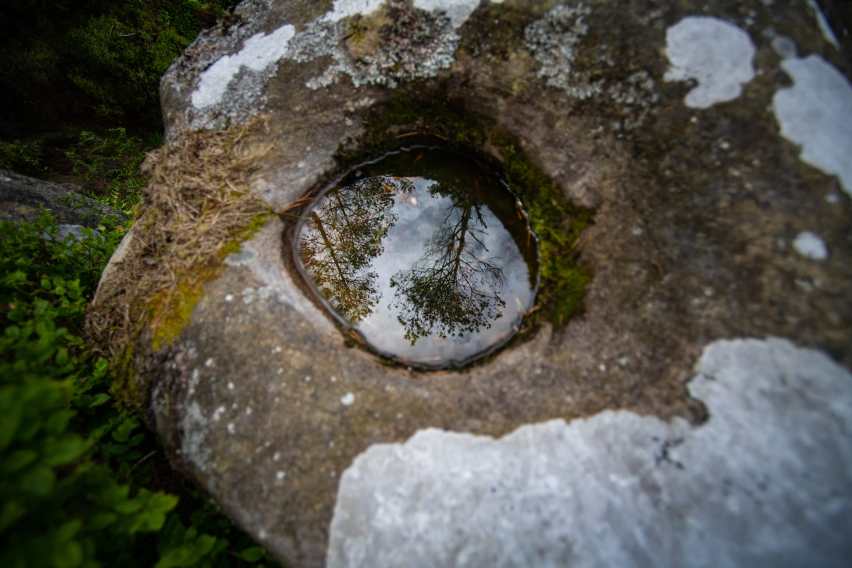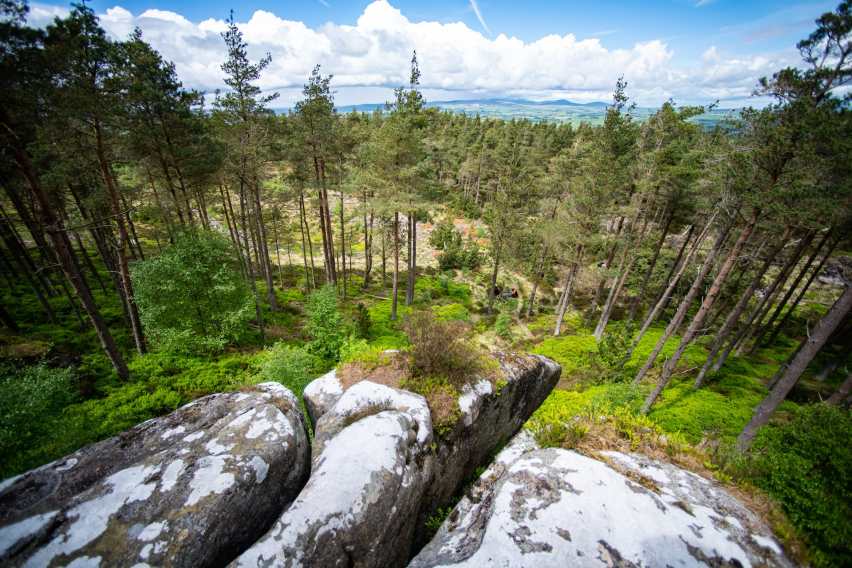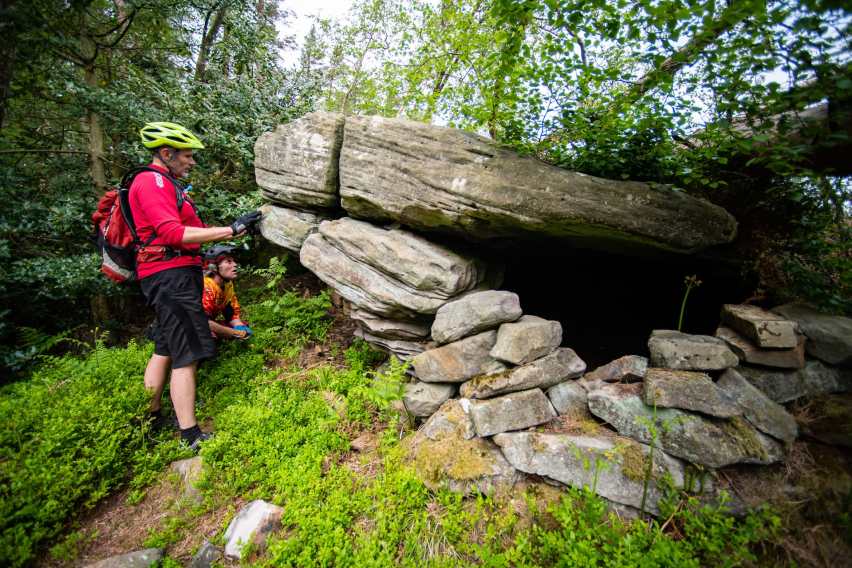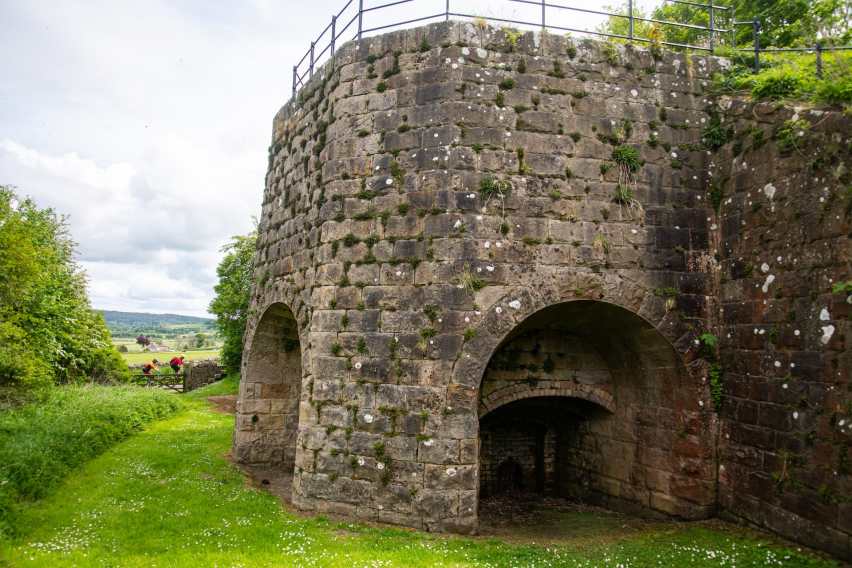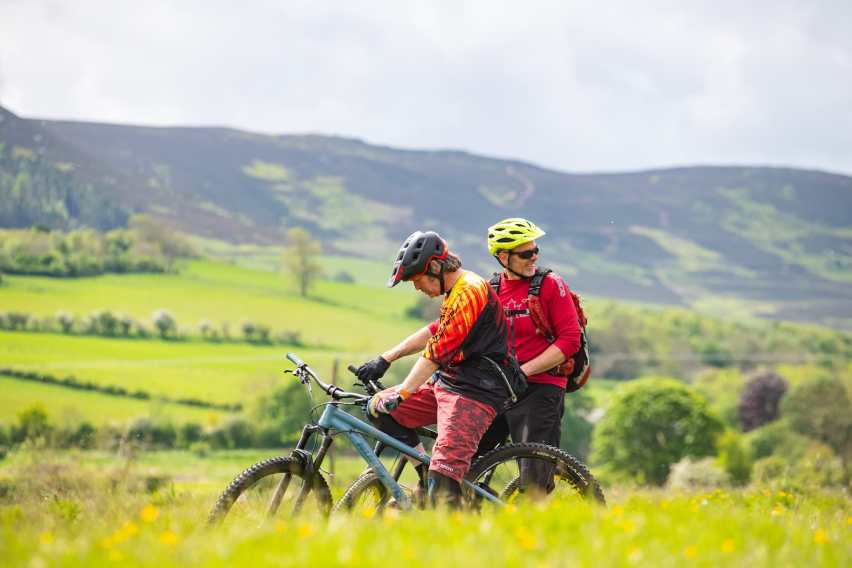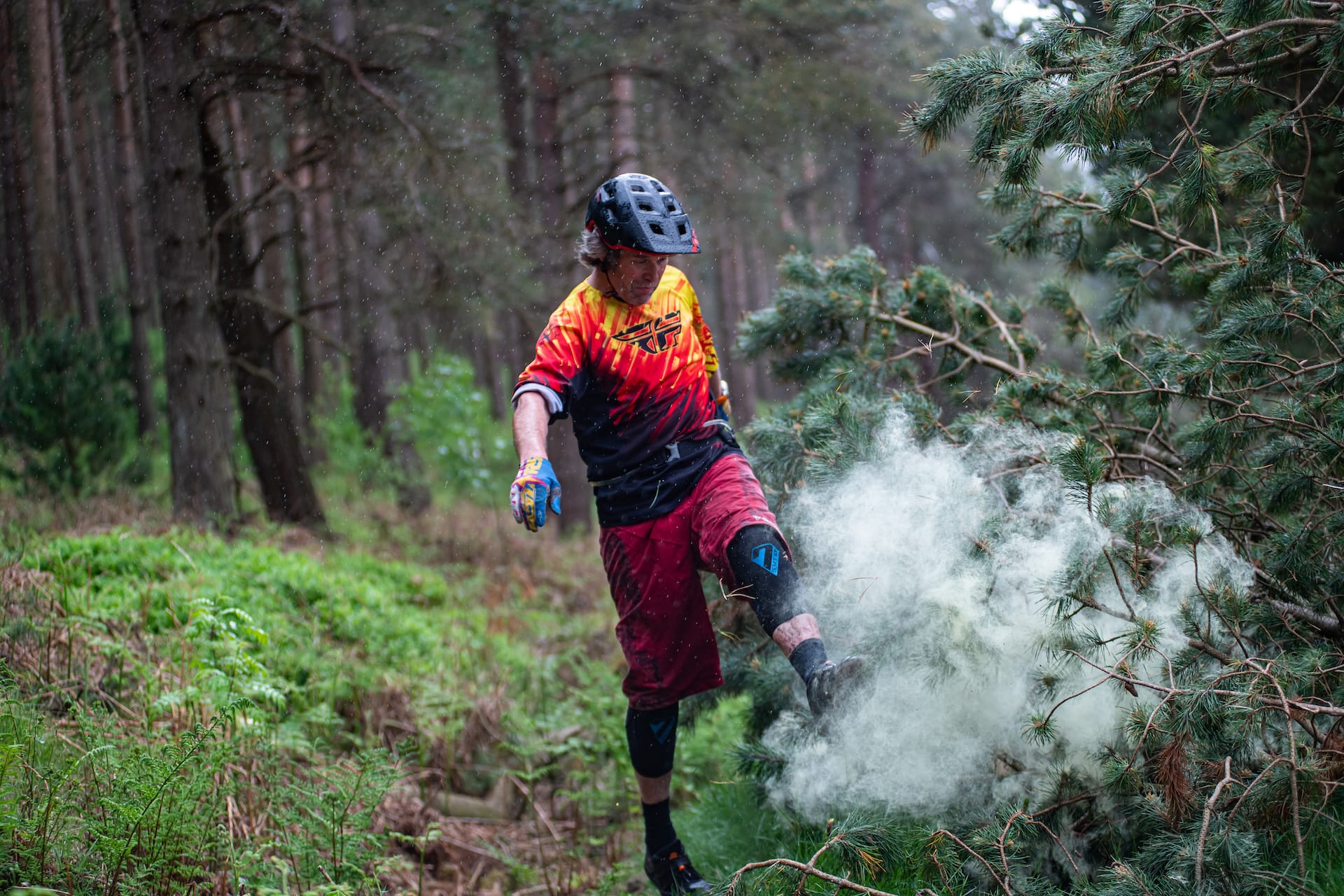What’s short, hairy and lures us to the moors of Northumberland – Pete, or a Duegar?
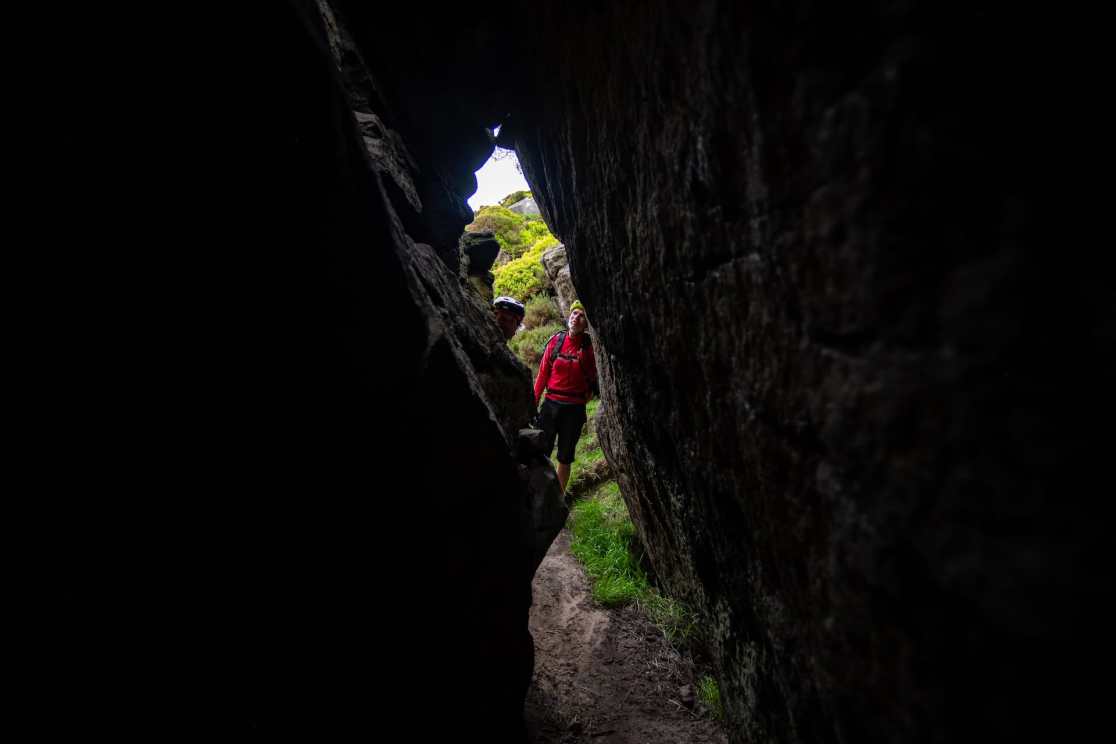
Words & Photography Pete Scullion
North of Hadrian’s Wall and south of the Scottish border lies Northumberland, a land that blends the culture of its neighbours with its own, along with a solid dollop of Norse and Danish influence, courtesy of some enterprising plunderers.
It’s in search of one of the lesser-known branches of this that I have met local and mountain biking legend Ian Jones and his pal Tim in Thropton which lies just down the road from the equally sleepy Rothbury in the Coquet Valley. High above Thropton sits Simonside, a popular walking spot for locals and Newcastle residents alike – it is here that my quarry is said to reside.
Not do-gooders
We are following the story of the duegars. Much like myself, they’re short and hairy creatures, but unlike myself, fond of luring unsuspecting travellers to their deaths. Duegars are dwarves of Old Norse myths and come with a myriad of different spellings in Middle and Old English, as well as Northumbrian dialect. Beyond the multiple spellings there are multiple pronunciations, and more than one local has pronounced duegar differently: ‘durjers’, ‘dyoogars’… the lot.
Latest Singletrack Merch
Buying and wearing our sustainable merch is another great way to support Singletrack
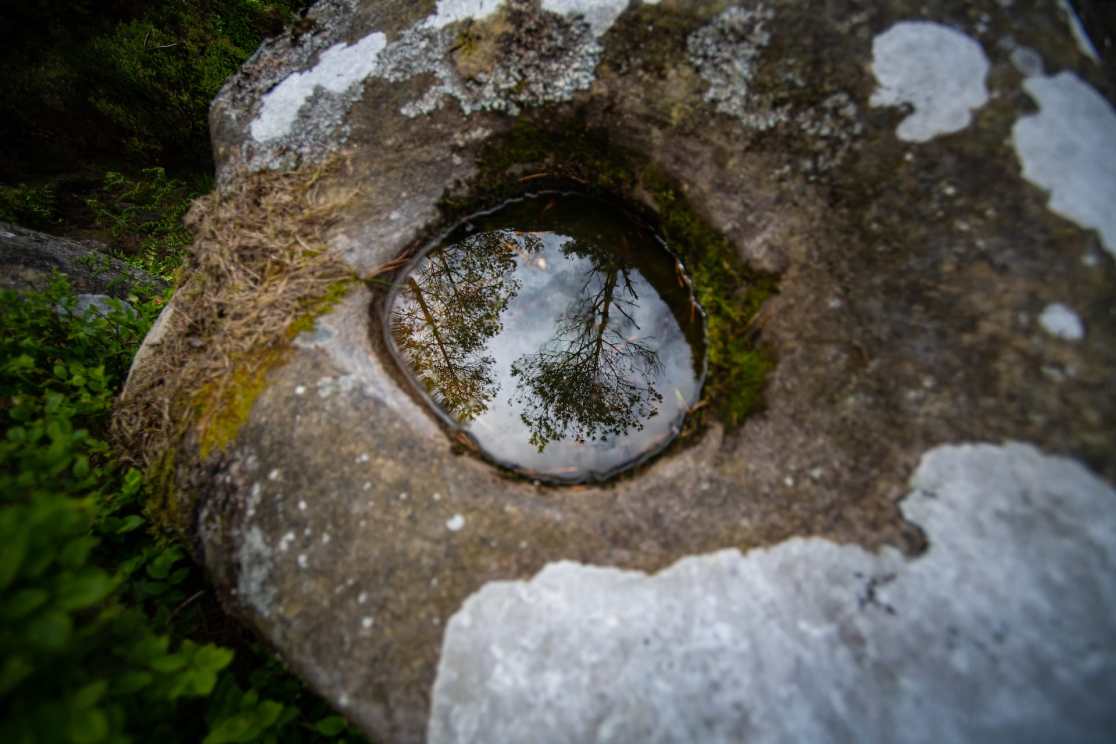
In Frederick Grice’s The Duergar in Folk Tales of the North Country (1944), duegars are described as short and wear a lambskin coat, moleskin trousers and shoes, and a hat made of moss stuck with a feather. Quite the ensemble.
In Norse mythology, it is said that duegars were once maggots that ate the flesh of the dying giant Ymir, and were given human-like knowledge and powers. Like the dwarves of Middle Earth, their Nordic cousins were skilled metalworkers, creating weapons and armour without parallel, and making fine jewellery out of precious metals and stones. There is no account of Simonside duegars doing anything but tricking people to their deaths. Either way, these mischievous dwarves used lit lanterns to lure unwary, and often lost, travellers into bogs or off cliffs. Tales tell of duegars welcoming those wandering the open hills, offering shelter in their small huts. When the wanderers awake, the hut and the dwarf have vanished and they have spent the night on a cliff edge.

The name Simonside likely stems from Sigmund’s Seat, or Sigmund’s Settlement.
Sigmund is a hero mentioned in the old Germanic saga, Beowulf. There are also links to Simon being a domestic brewer of Arthurian legend who was rather fond of killing dragons. Simonside is littered with the same Iron Age hill forts that are dotted on every hilltop in the Cheviots further north. The easternmost point of Simonside sports The Beacon, named for being used to warn of the imminent arrival of invading Scots. The crags give an excellent view across Coquetdale and to the flatter land east of the Cheviots that would more easily carry an invading army. To the south are the rolling hills of County Durham.
Not lost, led astray
From the high point of my Kirk Yetholm Classic Ride (in issue 134), you can just make out the Simonside Crags on a clear day, with Thropton nestled against the River Coquet below. While not all that far away, the drive between the two certainly isn’t short. As we set off from Ian’s gaff the sun is out in force, but there’s plenty of rain threatening out west. We’re hopeful that we can dodge the liquid sunshine and keep to the real deal.

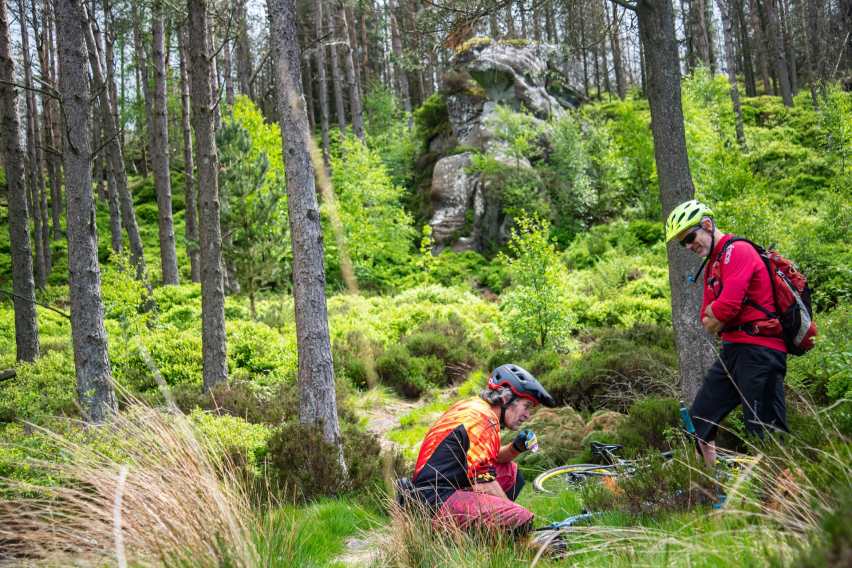
Everything seems to have come to life in this part of the world – oilseed fields are bright yellow, the bluebells are in full effect, ducklings line up behind their mothers in the ponds and streams, the bleat of lambs carries on the air and the swallows are busy plucking invertebrates out of the sky. Closer to the hedgerows, the flies are thick and we’re doing our best to avoid them as we winch our way up to Great Tosson.
A break in the dry stone wall reveals the old lime kilns, alongside the lime quarry, that would have dominated the hillside in the 19th century. Lime would have been quarried and brought here to the furnaces. The resulting product would either be used to increase agricultural productivity or be used in mortar. It was made for Lord William Armstrong who occupied the Cragside estate on the hill above Rothbury.
Armstrong was an engineer whose company works took up a large part of the docks on the Tyne. They made everything from railway locomotives to cranes, bridges to artillery, warplanes and even battleships. The Armstrong Whitworth Whitley bomber; HMS Malaya, a Queen Elizabeth-class battleship; and HMS Rodney, are likely the most famous of their creations. The lime kilns ran until the outbreak of World War Two, when it was thought that the fires would help Axis bombers reach their targets. It is likely that the god-fearing people who worked here in the 19th century would have been the ones who helped foment the tales of the duegars, those who went missing on the hill might not want to admit their own foolishness, but rather turn to handy local mythology for a reasonable excuse.
Church going
From here, it’s a long, steady winch into the Scots pine plantation that still bears all the hallmarks of the storms that ravaged the UK as 2022 opened its account. The rain still hasn’t got to us yet and the skin is starting to leak as the fire road tops out, giving our legs some welcome respite. Hidden in the woods is the first hint that we might be in duegar territory. A small outcrop of moorland grit has an entrance closed with bricks made of the same. The sweetie wrappers suggest some more recent and human visitors, but could this be where the Norse dwarves retreat to when the sun comes up?
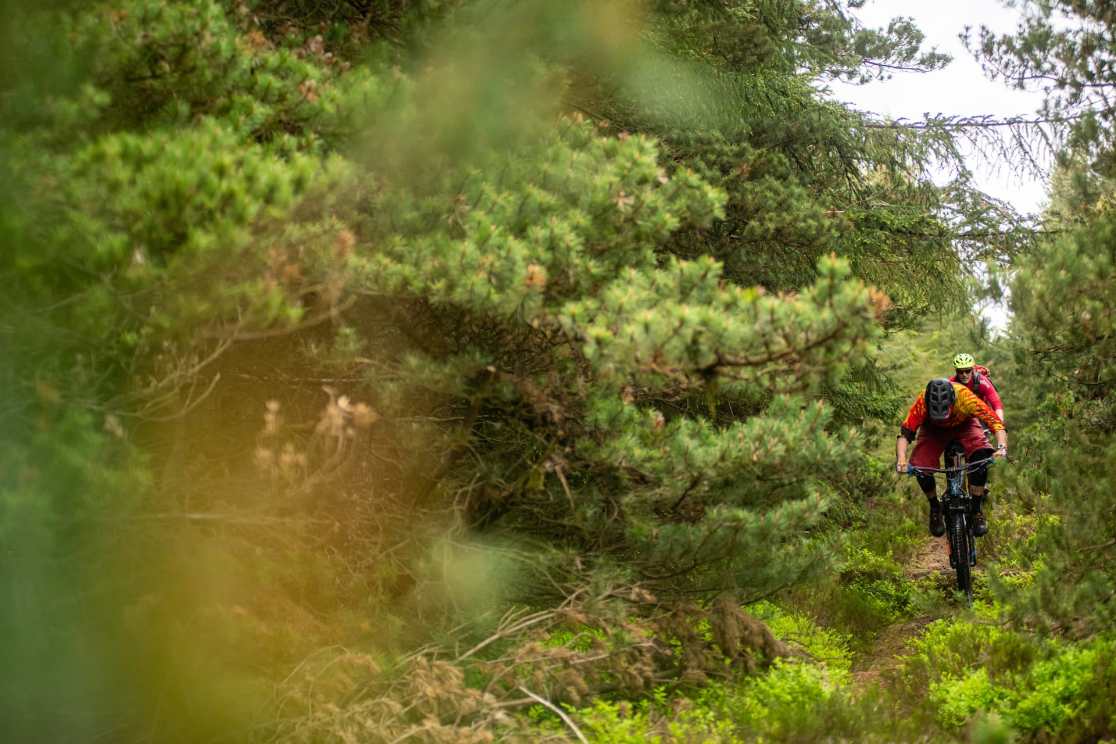
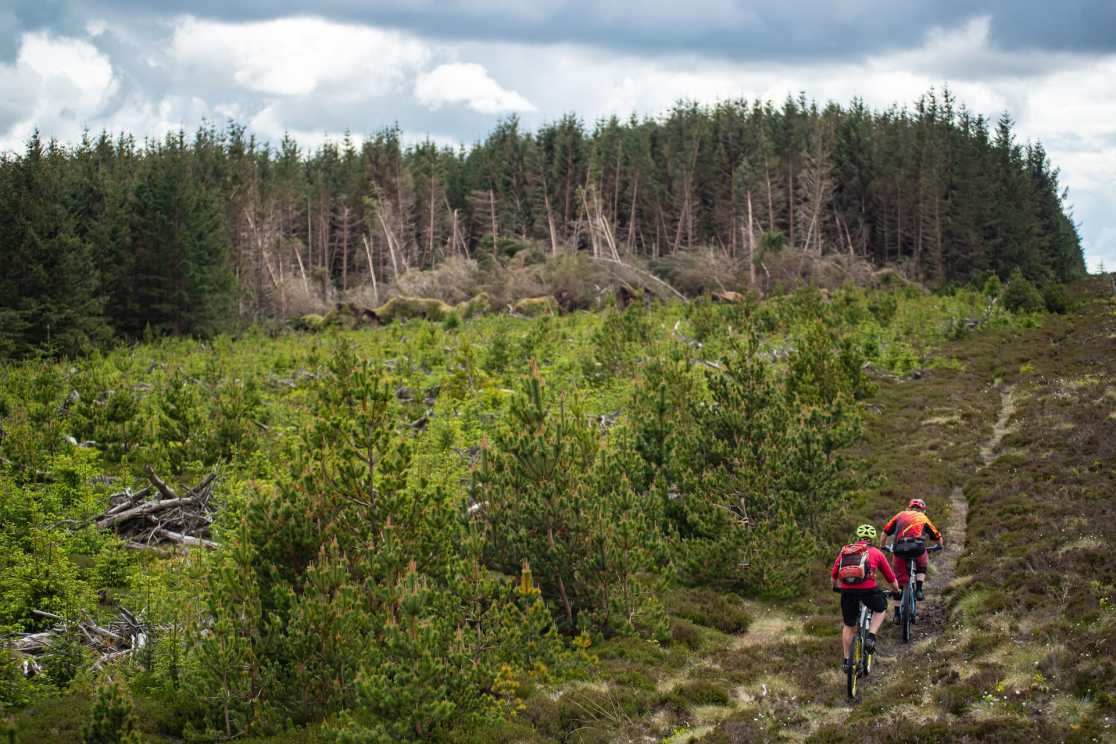
The explanation behind why so few people have seen a duegar is that they only come out at night, choosing to dwell underground during daylight. Their lanterns are said to be akin to the will-o’-the-wisp, a spectral apparition that also preys on the lost. Anyone who’s read my Coffin Road pieces might recall those ghostly lights that are said to be the spirit of the dead trying to return to haunt the living. Are the duegars a part of the tradition of death in early modern Britain? Who knows, but there certainly are some parallels.
Higher up the plantation we find the rather spectacular outcrop of gritstone known as Little Church Rock. Looking very much like a pulpit, the rock is said to be the site of religious services, perhaps paganism, once Oswald, King of Northumbria, had introduced Christianity to his lands. The numerous nooks and small caves in Little Church Rock could also well be where the duegars emerge from as darkness falls. They’re nowhere to be seen though as it’s approaching the part of the day when the sun is at its highest and our eyes are stinging in the bright light. We opt to keep moving in the still and sticky air. Further up the fire road, we’re winding our way past more fallen silver birches and our first full view of the Cheviot Hills also grants us our first view of the walls of rain we have so far dodged up until now. Soon the fire road peters out and the trail ahead is chunky and unforgiving. Thankfully, the gritstone is grippy enough and we give each other enough space to winch our way through the rocks and low-hanging trees until we’re up and above the treeline for the first time.
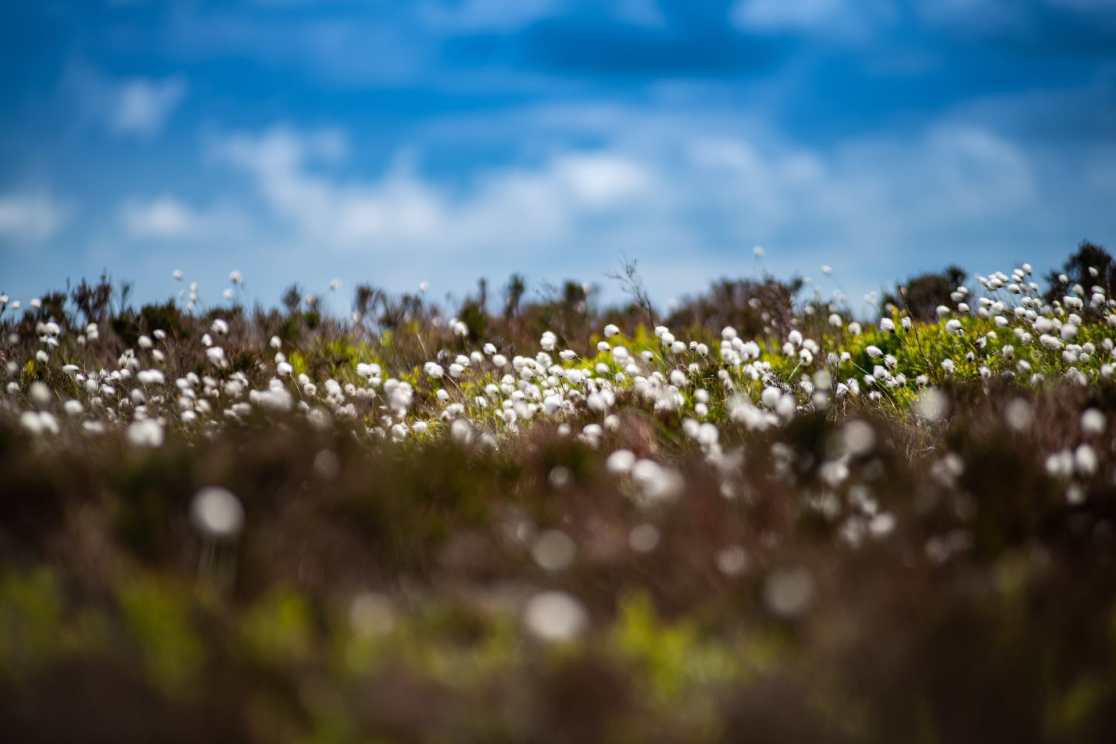
Pulling 360s
Above the regenerating native trees, heather and bog cotton are king. Bees hum busily trying to find those heather flowers that might have been lured into opening by the strong early summer sun. The breeze up here is very welcome, but it’s also bringing in some nasty looking showers. We make haste towards the weather edge to pick up our first descent of the day – a classic dive into a fire break now littered with the heaving roots of trees wrestled hard by the storms earlier in the year – I’m struggling to keep up down this fast, narrow hack towards the fire road. After almost an hour of winching from the valley floor, it’s nice to be going downhill. The trees have done well to hide the ground from the sun, and as a result, the trail squirms beneath our tyres, grip coming and going as it pleases. I’m happy keeping my front wheel facing forwards like the two locals, but wind between myself and them.
Before we know it, we’re thrown back out onto the fire road, the cool darkness of the forest giving way to bright, white, dusty fire roads and yet more climbing. It’s clear that logging lorries have been hammering this road hard and we’ve no clue if another one is just around the corner, so we crack on with Simonside Crags now very much in our sights. We leave the bikes at the foot of the crag and take the short hike to the top. From here you get almost a full panoramic view to the Cheviots and the land to their east, the North Sea beyond that, and Northumberland as it turns into County Durham to the south. Tosson Hill to our west is the only thing barring that full 360 view.
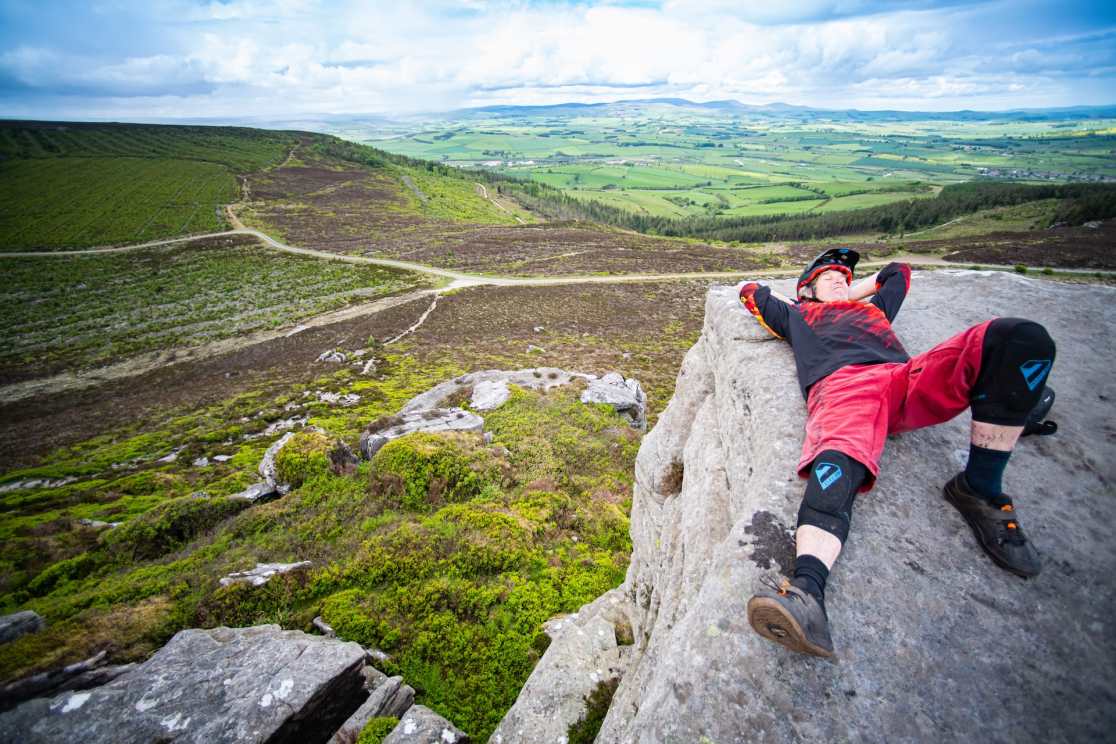
Choose your misadventure
We have to imagine the time when this hill would have been devoid of the plantation crop of trees, the flat ground around the crags wet and boggy, one bridleway crossing from Coquetdale to the valley to the south, and a lonely traveller lost on the hill. Darkness falls and a small dwarf welcomes you by lantern light, beckoning you into a small hut. Relieved, you settle down for the night only to be woken by the wind whipping about the crags. A bleary-head is shot to pieces as you stare at the 60-foot drop mere inches away…
The other option is that dwarf or its companions leads you not along this one navigable track, but into a quagmire of rotting mud and organic matter. Cold and damp you soon succumb to exposure, especially in the colder months. As if to hammer home the point, as we make our way off the crags, the rain comes in hard and then, as quickly as it arrived, it vanishes again. The plants and rock now glistening with a fresh layer of water don’t help our squinting eyes as we head towards the final descent back to the start point.
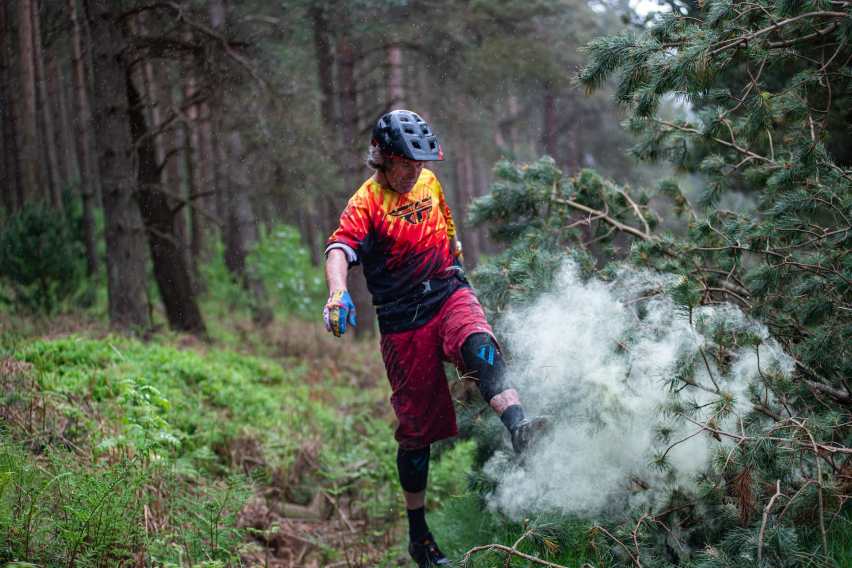


Two of us have come from the Fort William World Cup the day before – Ian doesn’t seem to be feeling it, but I certainly am. Tim is definitely showing us a clean pair of heels just before the ground turns downward for the second time. A shallow gully hides its dangers in long grass and wet mud, before giving way to a boulder-strewn mess that requires some sharp wits to keep both body and bike in one piece. Almost as I’m thinking about playing it safe, Ian’s gone over the bars and smashed his hip into some of Northumberland’s finest gritstone. That could have been a fair bit worse… Like the champ he is, he’s back on his bike and not showing any signs of the crash having slowed him any. If anything, he’s going faster now…
And with that, we’re winding our way back down the fire road when another rain squall rolls in. We opt to sit this one out as we approach the edge of the forest, now some several hundred feet below the crags. We’re thankful for the shelter as the rain is cold. I rue enjoying the option of short sleeves as I feel my hands, then my arms, start to go numb. Ian uses the opportunity to show me that the pines here are in bloom by giving a fallen tree a good hoof. A swirl of tree pollen erupts from his boot in a cloud that the rain can’t dampen. Again, the rain abates and we’re left to try to keep the omnipresent flies out of our eyes as we speed down past the lime kilns and back into the village. With another wall of rain presenting itself on the horizon, we’ve done well to dodge the elements.
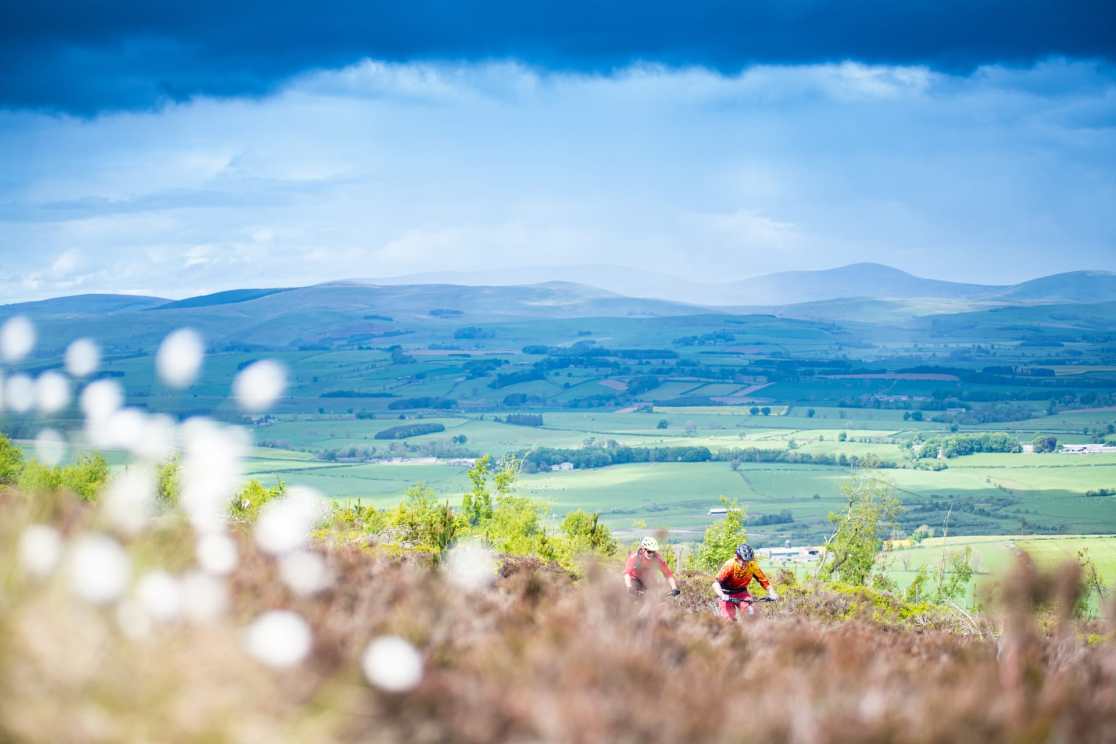
Dwarfed by history
Other than a few centuries of graffiti, hand carved into gritstone as old as the earth, there seems to be little rhyme or reason behind the duegar myth from what I can gather. The only modern deaths recorded on the hills that seem to present themselves are when a Hawker Hurricane and a Supermarine Spitfire crashed at opposite ends of World War Two. It’s highly unlikely that any dwarves bothered these two planes and sadly both pilots died in their respective crashes, so no lost persons to lead astray.
Further back in time, numerous archaeological investigations of the Lordenshaw hill fort, for example, would have surely turfed up some evidence of subterranean dwelling dwarves… Iron Age swords and cemeteries have been found here, but nothing of duegars…
It turns out that the only mischievous dwarf on the hill that day was me…
